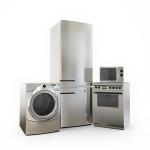How Reliable Are EnergyGuide Labels?
This entry was posted on January 30, 2015 .

Energy Savings Labels' Accuracy Depends on Location, Expert Finds When they're shopping for appliances, many consumers keep an eye out for the yellow EnergyGuide labels that are required to be attached to the products in accordance with federal law. As CBS explained, the tags provide two key pieces of information - they indicate how much energy each appliance uses and offer an estimate of annual operational costs. But how accurate is this data?
According to Lucas Davis, an economics professor at Berkeley, the answer to that question depends on where people live.
"They show information based on national average electricity prices," Davis said of the stickers, as quoted by the media outlet. "The problem is people don't have [any] idea how much they spend for electricity so they have no idea how to make that conversion."
For instance, the price of electricity in Delaware, New Jersey and Pennsylvania is higher than the national average, the news source pointed out. Because of this, the estimates printed on the labels that detail how much appliances will cost residents of these states to run per year are too low.
EnergyGuide Labels Still Serve A Purpose Although the estimated annual expenditures on the tags can't be reliably counted on in terms of accuracy, the Federal Trade Commission-mandated labels have still proven to be a useful tool for comparison-shoppers.
"We found people who saw better labels, made better decisions and they saved money, a lot of money," said Davis, the head of a team of researchers who have studied the labels for the past two years, according to CBS.
Could State-Specific Label Printing Solve the Inaccuracies? One way to circumvent the confusion based on displaying national cost averages on the labels is to create state-specific labels that offer more accurate information. However, developing 50 different sets of labels and ensuring they all end up on products that will be sold in the correct states is a tall order - such an enormous undertaking, in fact, that the FDA has deemed it simply not possible.
For now, at least, it looks like appliance shoppers should be taking the yearly cost estimates printed on those distinctive yellow energy savings tags with a pinch of salt. That being said, at least the numbers can prove useful in terms of identifying the options that will be cheapest to operate.
Request your FREE instant quote today.

 Custom Labels
Custom Labels  Custom Beverage Labels
Custom Beverage Labels  Custom Lip Balm Labels
Custom Lip Balm Labels  Custom Warning & Safety Labels
Custom Warning & Safety Labels  Perfume Bottle Labels
Perfume Bottle Labels  Bumper Stickers
Bumper Stickers  Custom Prop 65 Warning Labels
Custom Prop 65 Warning Labels  Custom Stickers
Custom Stickers